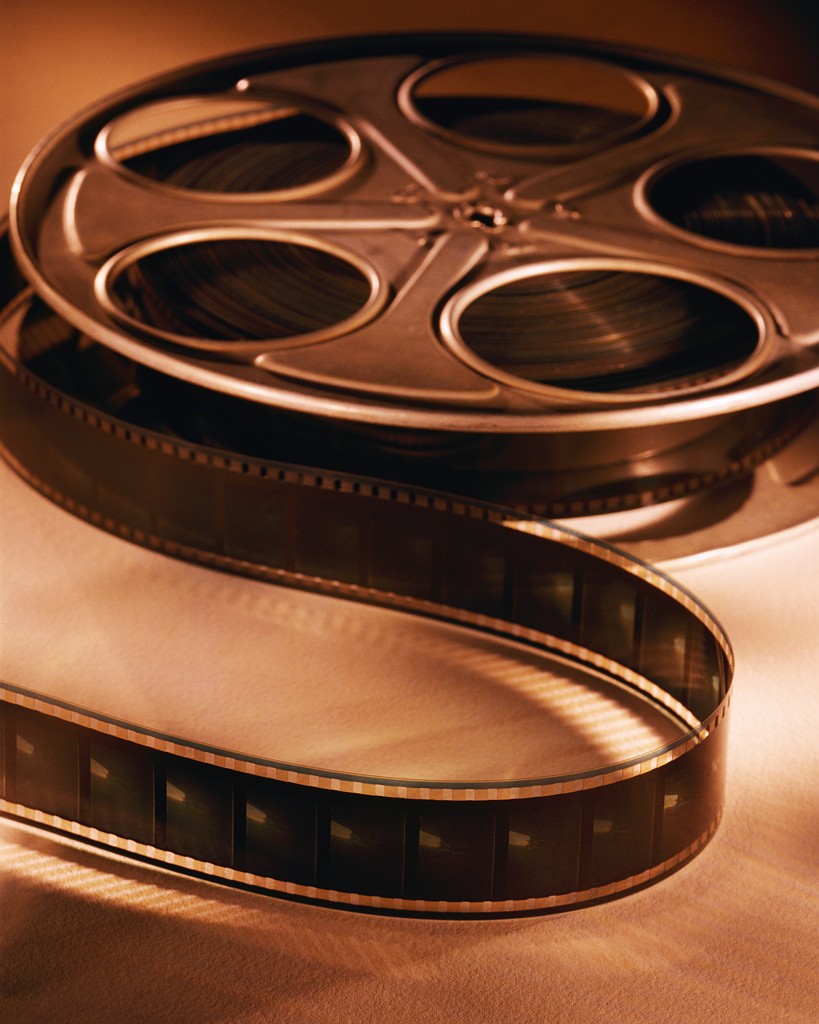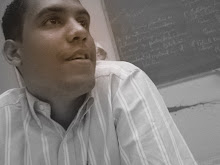Evolucion de Trabajo con Sketch de Video en la ciudad en busca de la esencia verde atraves de un recorrido.
Urbe Verde II

jueves, 31 de enero de 2008
StoryBoard IV
Publicadas por
Carlos N. Valdez Rodríguez
a la/s
3:17 p. m.
0
comentarios
![]()
![]()
Etiquetas: Cv.6-
Storyboard III
Publicadas por
Carlos N. Valdez Rodríguez
a la/s
12:40 a. m.
0
comentarios
![]()
![]()
Etiquetas: Cv.5-
sábado, 26 de enero de 2008
Storyboard II
Sobre Santo Domingo Urbe Verde...
Este es un esbozo de el tema que estoy realizando sobre nuestra ciudad como una urbe verde creciendo y coexistiendo junto a la naturaleza que tambien tiene sus espacios dentro de la ciudad.
Publicadas por
Carlos N. Valdez Rodríguez
a la/s
8:57 p. m.
0
comentarios
![]()
![]()
Etiquetas: Cv.4-
sábado, 19 de enero de 2008
Storyboard I
Publicadas por
Carlos N. Valdez Rodríguez
a la/s
8:11 p. m.
0
comentarios
![]()
![]()
Etiquetas: Cv.3-
lunes, 14 de enero de 2008
Brazil – Terry Gilliam
Interesante filme bastante creativo que manda a volar la imaginación mediante se va desenvolviendo la trama nos deja ver que debemos perseguir nuestros sueños a pesar de las adversidades. Se denota un drama intenso en el cual se ve una ciudad llena de problemas, y con sistema supuestamente perfecto el cual solo estaba desintegrado, cuestionando esa sociedad.
A nivel visual el uso del cambio de imágenes constantemente para mandar su mensaje, los espacios empiezan con una temática un poco real según la trama luego de que nos presentan el espacio lo llevan al extremo exagerado de este, cayendo en lo surrealista. Esto no solo sucede con los espacios sino con todo lo relacionado a la pelicula desde los objetos que vemos hasta la vestimenta y acciones de los personajes.
Publicadas por
Carlos N. Valdez Rodríguez
a la/s
8:59 a. m.
0
comentarios
![]()
![]()
Etiquetas: Cv.2-
sábado, 12 de enero de 2008
Imagen Sobre Greenway
Publicadas por
Carlos N. Valdez Rodríguez
a la/s
2:48 a. m.
0
comentarios
![]()
![]()
Etiquetas: Cv.1-
Biografia Peter Greenway
Born:
April 5, 1942 in Newport, Wales, UK
Occupation:
Director, Screenwriter
Website:
http://petergreenaway.co.uk/
Entrevista:http://architettura.supereva.com/movies/20030427/index.htm
Biography: An avant-gardist who earned surprising access to the mainstream, Peter Greenaway is among the most ambitious and controversial filmmakers of his era. Trained as a painter and heavily influenced by theories of structural linguistics, ethnography, and philosophy, Greenaway's films traversed often unprecedented ground, consistently exploring the boundaries of the medium by rejecting formal narrative structures in favor of awe-striking imagery, shifting meanings, and mercurial emotional tension; fascinated by formal symmetries and parallels, his material displayed an almost obsessive interest in list-making and cataloguing, earning equal notoriety for its provocative eroticism as well as its almost self-conscious pretentiousness.
An avant-gardist who earned surprising access to the mainstream, Peter Greenaway is among the most ambitious and controversial filmmakers of his era. Trained as a painter and heavily influenced by theories of structural linguistics, ethnography, and philosophy, Greenaway's films traversed often unprecedented ground, consistently exploring the boundaries of the medium by rejecting formal narrative structures in favor of awe-striking imagery, shifting meanings, and mercurial emotional tension; fascinated by formal symmetries and parallels, his material displayed an almost obsessive interest in list-making and cataloguing, earning equal notoriety for its provocative eroticism as well as its almost self-conscious pretentiousness.
Born April 5, 1942, in Newport, Wales, Greenaway was raised primarily in nearby Chingford. After deciding at the age of 12 to become a painter, he entered the Walthamstow College of Art, where among his classmates was the future post-punk musician Ian Dury. By 1965, Greenaway had begun working as a film editor for the Central Office of Information, where within a year he started making his own experimental short features. Typical of his work of the period was 1966's Train, which featured footage of a steam-powered locomotive arriving at Waterloo Station recast as a mechanical ballet with a musique concrete score. The first of Greenaway's experimental short films to gain widespread distribution was 1969's seven-minute Intervals. He continued releasing work sporadically throughout the first half of the 1970s, ranging in length from 1974's four-minute Windows to 1976's 40-minute Goole by Numbers (an early hint of the fascination with numerology which would consume much of his later work). With 1978's A Walk Through H and Vertical Features Remake, Greenaway first garnered festival notice, and with 1980's The Falls, a "documentary" set in the future, he made his long-awaited feature debut. The 1982 17th century drama The Draughtsman's Contract was his critical breakthrough, and the film launched him to the forefront of the global experimental film community. In 1983, Greenaway helmed documentaries on the American composers Robert Ashley, John Cage, Philip Glass, and Meredith Monk for Britain's Channel Four television network. Over the next two years he produced only three short films (Making a Splash, Inside Rooms -- 26 Bathrooms, and A TV Dante Canto 5) and did not return to feature filmmaking prior to 1985's superb A Zed and Two Noughts.
The 1982 17th century drama The Draughtsman's Contract was his critical breakthrough, and the film launched him to the forefront of the global experimental film community. In 1983, Greenaway helmed documentaries on the American composers Robert Ashley, John Cage, Philip Glass, and Meredith Monk for Britain's Channel Four television network. Over the next two years he produced only three short films (Making a Splash, Inside Rooms -- 26 Bathrooms, and A TV Dante Canto 5) and did not return to feature filmmaking prior to 1985's superb A Zed and Two Noughts.
Two years later he released The Belly of an Architect, its focus on themes of obsession clearly mirroring Greenaway's own persona. Even more detailed was 1988's Drowning by Numbers, which stuffed its blackly comic tale of a murderous family with numerological references ranging in tone from broad visual puns to nods to Dante's Divine Comedy. With 1989's more accessible The Cook, the Thief, His Wife and Her Lover, Greenaway made his American breakthrough. A corrosive allegory of life in contemporary England, the film became the subject of much controversy in the U.S. when it fell subject to the MPAA's new "NC-17" rating, consequently winning the biggest audiences of the director's career. The follow-up, 1991's Prospero's Books, was his most experimental feature yet.
A radical reinterpretation of Shakespeare's The Tempest, it employed a revolutionary new device called an electronic paintbox which allowed Greenaway to fill the screen with an intricate series of intertextual double exposures and transparent overlays, eliciting some of his most extreme viewer response yet. Greenaway then returned to television for the next two years, helming 1991's M Is for Man, Music, Mozart and the 1993 revisionist biopic Darwin. Also in 1993 he returned to feature films with the highly controversial The Baby of Macon, a grim, violent satire of life in the 17th century which failed to find an American distributor.
Two years later Greenaway directed Stairs 1 Geneva, a documentary commissioned for Swiss television, as well as The Pillow Book, an erotic fable again utilizing the electronic paintbox first seen on Prospero's Books. In 1997 the film was finally picked up for American release, where it garnered some of Greenaway's most favorable response to date. In 1999, he released 8 1/2 Women, a black comedy about the roots and consequences of male sexual fantasy.
By Jason Ankeny, All Movie Guide
Publicadas por
Carlos N. Valdez Rodríguez
a la/s
2:12 a. m.
0
comentarios
![]()
![]()
Etiquetas: Cv.1-
Contexto
Dentro de la arquitectura es un complejo concepto que encierra demasiados aspectos al mismo tiempo y que, en diferentes etapas de la historia, ha tenido connotaciones diferentes. Básicamente, el término abarca todos los factores geográficos, físicos, culturales, históricos, sociales y de elementos construidos que caracterizan un lugar determinado en el que se va a desarrollar una obra.
El Contexto es un conjunto de circunstancias y elementos que constituyen un mensaje u objeto que conlleva a la respuesta que se tendrá en cuanto este sea integrado por el tiempo o época en que se realizara el proyecto, en que momentos, Incluyendo así el factor tiempo, la ubicación, la dirección, la cultura, la historia del lugar, el pensamientos de los usuarios como parte fundamental ya que son quienes lo utilizan, para que, por que, todo esto será el conjunto que permitirá que lo que realicemos sea recibido en un lenguaje entendible.
También es un término recientemente nuevo dentro de la arquitectura, que apenas comenzó a aplicarse en la segunda parte del siglo XX, cuando en plena decadencia de la arquitectura funcionalista moderna -en la que el contexto valía menos que nada-, surgió un fuerte movimiento que abogaba por la valoración de todos los factores históricos que incidían en la generación de los espacios. De allí nace el contextualismo.
Publicadas por
Carlos N. Valdez Rodríguez
a la/s
1:34 a. m.
0
comentarios
![]()
![]()
Etiquetas: Cv.1-


